1. Vincent JL, Marshall JC, Namendys-Silva SA, François B, Martin-Loeches I, Lipman J, et al. Assessment of the worldwide burden of critical illness: the intensive care over nations (ICON) audit. Lancet Respir Med. 2014; 2(5):380–386. PMID:
24740011.
2. Hilberman M. The evolution of intensive care units. Crit Care Med. 1975; 3(4):159–165. PMID:
1104263.
3. Vincent JL, Singer M, Marini JJ, Moreno R, Levy M, Matthay MA, et al. Thirty years of critical care medicine. Crit Care. 2010; 14(3):311. PMID:
20550727.
4. Kwak SH, Jeong CW, Lee SH, Lee HJ, Koh Y. Current status of intensive care units registered as critical care subspecialty training hospitals in Korea. J Korean Med Sci. 2014; 29(3):431–437. PMID:
24616595.
5. Ng R, Sutradhar R, Yao Z, Wodchis WP, Rosella LC. Smoking, drinking, diet and physical activity-modifiable lifestyle risk factors and their associations with age to first chronic disease. Int J Epidemiol. 2020; 49(1):113–130. PMID:
31329872.
6. Jones P, Karim Sulaiman S, Gamage KN, Tokas T, Jamnadass E, Somani BK. Do lifestyle factors including smoking, alcohol, and exercise impact your risk of developing kidney stone disease? Outcomes of a systematic review. J Endourol. 2021; 35(1):1–7. PMID:
32808537.
7. Lee SR, Choi EK, Ahn HJ, Han KD, Oh S, Lip GY. Association between clustering of unhealthy lifestyle factors and risk of new-onset atrial fibrillation: a nationwide population-based study. Sci Rep. 2020; 10(1):19224. PMID:
33154443.
8. Shi L, Shu XO, Li H, Cai H, Liu Q, Zheng W, et al. Physical activity, smoking, and alcohol consumption in association with incidence of type 2 diabetes among middle-aged and elderly Chinese men. PLoS One. 2013; 8(11):e77919. PMID:
24223743.
9. Ford ES, Zhao G, Tsai J, Li C. Low-risk lifestyle behaviors and all-cause mortality: findings from the National Health and Nutrition Examination Survey III Mortality Study. Am J Public Health. 2011; 101(10):1922–1929. PMID:
21852630.
10. Song SO, Jung CH, Song YD, Park CY, Kwon HS, Cha BS, et al. Background and data configuration process of a nationwide population-based study using the korean national health insurance system. Diabetes Metab J. 2014; 38(5):395–403. PMID:
25349827.
11. Fan JG, Jia JD, Li YM, Wang BY, Lu LG, Shi JP, et al. Guidelines for the diagnosis and management of nonalcoholic fatty liver disease: update 2010: (published in Chinese on Chinese Journal of Hepatology 2010; 18:163-166). J Dig Dis. 2011; 12(1):38–44. PMID:
21276207.
12. Farrell GC, Chitturi S, Lau GK, Sollano JD. Asia-Pacific Working Party on NAFLD. Guidelines for the assessment and management of non-alcoholic fatty liver disease in the Asia-Pacific region: executive summary. J Gastroenterol Hepatol. 2007; 22(6):775–777. PMID:
17565629.
13. Oh TK, Kim HG, Song IA. Epidemiologic study of intensive care unit admission in South Korea: a nationwide population-based cohort study from 2010 to 2019. Int J Environ Res Public Health. 2022; 20(1):81. PMID:
36612396.
14. Carlson SA, Fulton JE, Pratt M, Yang Z, Adams EK. Inadequate physical activity and health care expenditures in the United States. Prog Cardiovasc Dis. 2015; 57(4):315–323. PMID:
25559060.
15. Piercy KL, Troiano RP, Ballard RM, Carlson SA, Fulton JE, Galuska DA, et al. The physical activity guidelines for Americans. JAMA. 2018; 320(19):2020–2028. PMID:
30418471.
16. Lee IM, Shiroma EJ, Lobelo F, Puska P, Blair SN, Katzmarzyk PT, et al. Effect of physical inactivity on major non-communicable diseases worldwide: an analysis of burden of disease and life expectancy. Lancet. 2012; 380(9838):219–229. PMID:
22818936.
17. Hopkins RO, Miller RR 3rd, Rodriguez L, Spuhler V, Thomsen GE. Physical therapy on the wards after early physical activity and mobility in the intensive care unit. Phys Ther. 2012; 92(12):1518–1523. PMID:
22491481.
18. Rippe JM, Ward A, Porcari JP, Freedson PS. Walking for health and fitness. JAMA. 1988; 259(18):2720–2724. PMID:
3282085.
19. Patel AV, Hildebrand JS, Leach CR, Campbell PT, Doyle C, Shuval K, et al. Walking in relation to mortality in a large prospective cohort of older U.S. adults. Am J Prev Med. 2018; 54(1):10–19. PMID:
29056372.
20. Nieman DC, Wentz LM. The compelling link between physical activity and the body’s defense system. J Sport Health Sci. 2019; 8(3):201–217. PMID:
31193280.
21. Jee YS. How much exercise do we need to improve our immune system?: second series of scientific evidence. J Exerc Rehabil. 2020; 16(2):113–114. PMID:
32509693.
22. Nieman DC. Moderate exercise improves immunity and decreases illness rates. Am J Lifestyle Med. 2011; 5(4):338–345.
23. da Silveira MP, da Silva Fagundes KK, Bizuti MR, Starck É, Rossi RC, de Resende E Silva DT. Physical exercise as a tool to help the immune system against COVID-19: an integrative review of the current literature. Clin Exp Med. 2021; 21(1):15–28. PMID:
32728975.
24. Haas B, Wunsch H. How does prior health status (age, comorbidities and frailty) determine critical illness and outcome? Curr Opin Crit Care. 2016; 22(5):500–505. PMID:
27478965.
25. Rey Lopez JP, Sabag A, Martinez Juan M, Rezende LF, Pastor-Valero M. Do vigorous-intensity and moderate-intensity physical activities reduce mortality to the same extent? A systematic review and meta-analysis. BMJ Open Sport Exerc Med. 2020; 6(1):e000775.
26. Alroumi F, Abdul Azim A, Kergo R, Lei Y, Dargin J. The impact of smoking on patient outcomes in severe sepsis and septic shock. J Intensive Care. 2018; 6(1):42. PMID:
30065844.
27. Ho KM, Hart G, Austin D, Hunter M, Botha J, Chavan S. Dose-related effect of smoking on mortality in critically ill patients: a multicentre cohort study. Intensive Care Med. 2011; 37(6):981–989. PMID:
21394625.
28. Lu Q, Gottlieb E, Rounds S. Effects of cigarette smoke on pulmonary endothelial cells. Am J Physiol Lung Cell Mol Physiol. 2018; 314(5):L743–L756. PMID:
29351435.
29. Karanasos A, Aznaouridis K, Latsios G, Synetos A, Plitaria S, Tousoulis D, et al. Impact of smoking status on disease severity and mortality of hospitalized patients with COVID-19 infection: a systematic review and meta-analysis. Nicotine Tob Res. 2020; 22(9):1657–1659. PMID:
32564072.
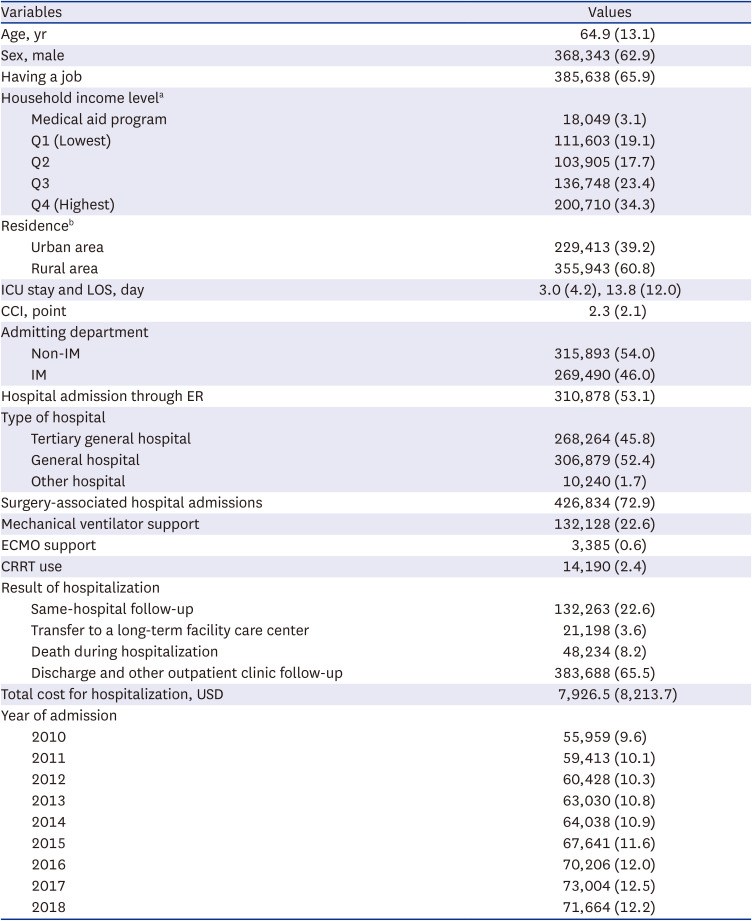
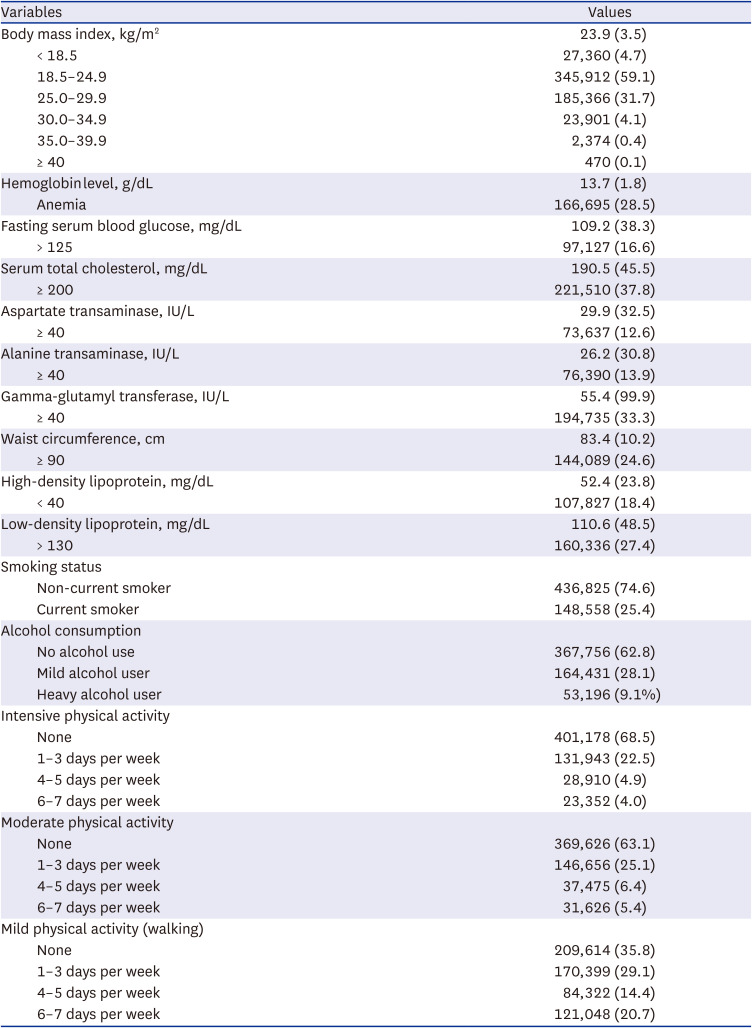
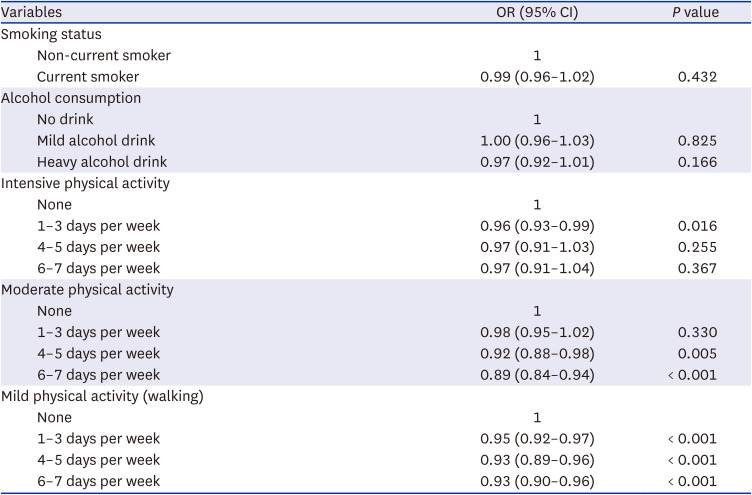





 PDF
PDF Citation
Citation Print
Print



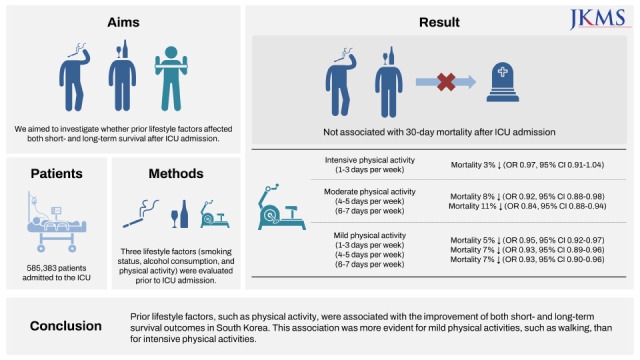
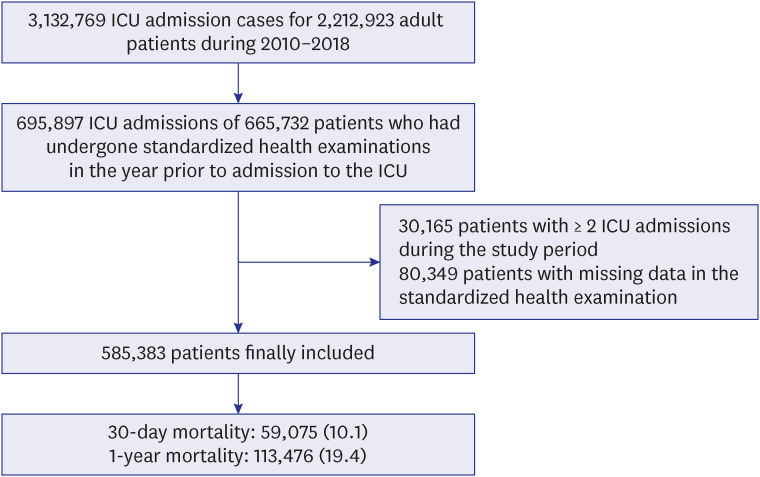
 XML Download
XML Download